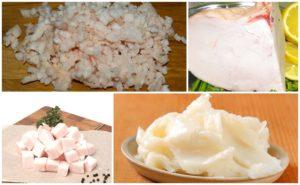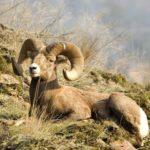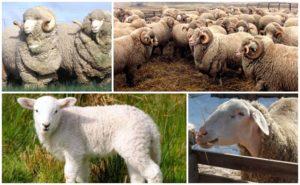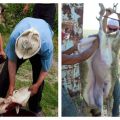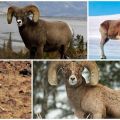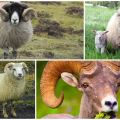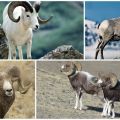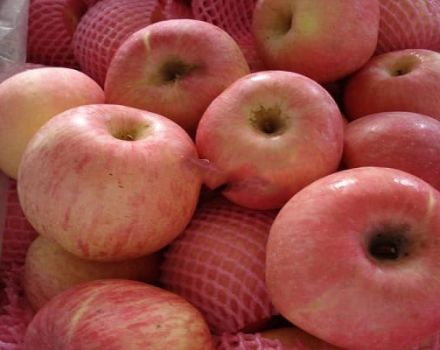Description of Turkmen mountain sheep and their way of life, what the enemies also eat
The mountain Turkmen sheep are also called Ustyurt and Kopetdag. The species is divided into three groups according to its distribution area: Kazakhstani (the most numerous), Turkmen and Karakalpak (almost completely disappeared). The species was discovered in the 1830s, described in the 1850s, and already in the second half of the 20th century, mountain rams were on the verge of extinction due to poachers and active economic activity in their areas of residence.
Appearance
Residents of Kazakhstan and Turkmenistan call the mountain ram "arkar". A rare species in the process of research was reckoned either to mouflons (Asian genus of rams), then to urial (Ustyurt mountain rams). From here came various names of the species: "Ustyurt mouflon", "Ustyurt mountain sheep", "Trans-Caspian urial". But a genotype study carried out by Kazakhs in the 1990s confirmed the belonging of the Turkmen species to the Urial.
Turkmen sheep are beautiful and stately. The description of the species is given in the table.
| Height at withers | 93-95 cm |
| Color | red in summer, turns reddish-yellow in winter |
| Horns | in males exceed 90 cm in length, hollow, spiral-twisted, in females small, arcuate curved |
| Male breasts | decorated with a "collar" in the form of a long (from 30 cm), hanging almost to the ground wool, white from the chin to the sternum, black closer to the belly |
Habitat
The Turkmen mountain sheep is endemic to the watershed of the Aral and Caspian seas. The main habitats are the harsh steppe, semi-desert and desert areas of Turkmenistan, Ustyurt, Mangyshlak, Iran, Afghanistan, and the eastern Caspian coast.

Turkmen sheep, unlike other mountain relatives, do not climb higher than 500 m above the sea. They prefer to stay on steep slopes, hard-to-reach ledges, low rocky outliers.
Lifestyle and behavior
The Turkmen species is semi-sedentary. It roams regularly, but not for long distances. In the summer season, animals graze from dawn to midday heat, then hide in the shade of gorges. In the afternoon they leave the shelter, again go to the pasture. During the winter months, rams are active all day.
Turkmen arkars are herd animals. The herd stays all year round, in summer there are fewer individuals, in winter more. The more prosperous the existence of the herd, the larger it is. On average, it consists of 5 heads, but, depending on the conditions of existence, the number can range from 2 to 70 individuals.
In natural conditions, the Turkmen urial to some extent show territoriality, especially if the summer is hot, the number of watering places is reduced. Each herd feeds in a specific area, which includes several pastures, shelters and a watering hole. The movement of the herd within its territory is directed by the leader - the strongest male or the oldest female. Animals move strictly along the routes, as a result, over the years, the area has been covered with a net of sheep trails.
What do they eat?
The food of the Turkmen sheep is diverse, including more than 80 species of desert and semi-desert plants.
The diet changes seasonally, the richest becomes in the spring-summer period:
- spring and summer - grasses (bluegrass, feather grass), sedge;
- autumn and winter - astragalus, wormwood, saltwort.
Occasionally rams eat the leaves of caragana (yellow acacia), ephedra, and burgundy.
The herd goes to the watering hole from the middle of summer until the snow falls. In winter, rams get enough moisture by eating snow along with grasses. In spring, animals receive a significant percentage of moisture by feeding on saltwort, the shoots of which remain juicy until mid-summer. Turkmen urials prefer fresh or slightly salty water.

Natural enemies
Isolated individuals survive to old age. Almost all rams sooner or later become the prey of predators. Natural enemies of the Turkmen arkar:
- The wolf is the main enemy of the species. The mortality rate of rams from wolf canines in some years in the west of Ustyurt reached 70%.
- Caracal and golden eagle are medium-sized predators that hunt newborn lambs, which they can carry away. Adults are not afraid.
- Cheetah. Now the population of this predator in the region has become extinct. But earlier the animal hunted gazelles, saigas, and to a lesser extent mountain sheep.
The main enemy of the Turkmen sheep is not a predatory animal, but a man. Poaching has put the species on the brink of extinction.
Reproduction and offspring
Mountain rams reach sexual maturity by 2.5 years of age. At this age, females are already ready for mating, and males mature up to 4-6 years to become able to withstand rivals. But if the population is significantly reduced, the herd becomes small, then young males begin to participate in the battles for females and leadership in the group, although their inexperience negatively affects the fate of the offspring.
On average, 70% of lambs die before they reach a year. And in herds headed by young inexperienced males, this sad figure rises to 100%. The rut begins in October and lasts until December. There are, on average, 2.5 females per male. After rutting, males leave the herd for the winter, feed separately.
Lambing occurs from late March to early May. The female leaves the herd, goes to give birth to a hard-to-reach, heavily hewn gorge or to a middle tier terrace. Gives birth to 1 or 2 cubs.
Population status and species protection
Being endemic of the watershed of the Caspian and Aral Sea, the Turkmen mountain sheep needs strict protection. The ecological balance of the territories of its habitat is also in danger. The species is included in the Red Data Books of Turkmenistan, Kazakhstan, Uzbekistan, in Appendix II of the International Convention on Trade in Endangered Wild Species of Fauna and Flora. Reasons for the decline in the number of the Turkmen arkar:
- weak supervision of hunting activities;
- poaching;
- destruction of habitats as a result of agricultural and industrial development;
- changes in climatic conditions, more frequent droughts, reduction of forage vegetation.
In 1978, in the Kharkov and Ashgabat zoos, and in 1990 in Alma-Ata, lambs of the Turkmen ram were born.
In the mountains of Ustyurt and Mangyshlak, the number of the species decreased significantly, and on the territory of Karatau and Aktau, the Turkmen sheep disappeared.If in the 1960s there were 5-7 thousand individuals on the territory of Kazakhstan, then since the 2000s the population is less than 2 thousand heads.
The Turkmen mountain sheep is protected in the Ustyurt National Reserve, Aktau-Buzachinskiy and Karagiye-Karakol nature reserves. It is home to 30% of the Kazakh livestock.
